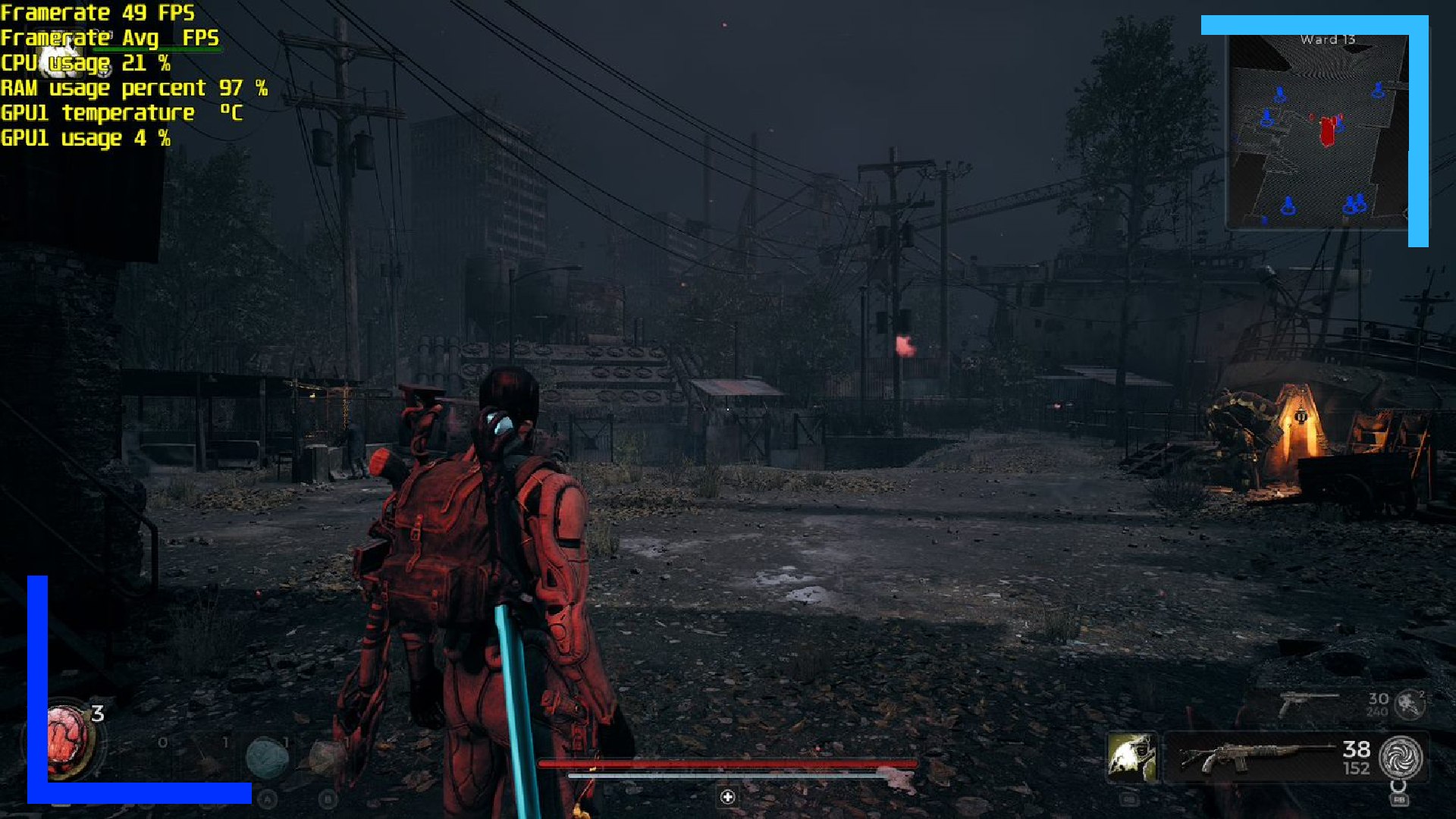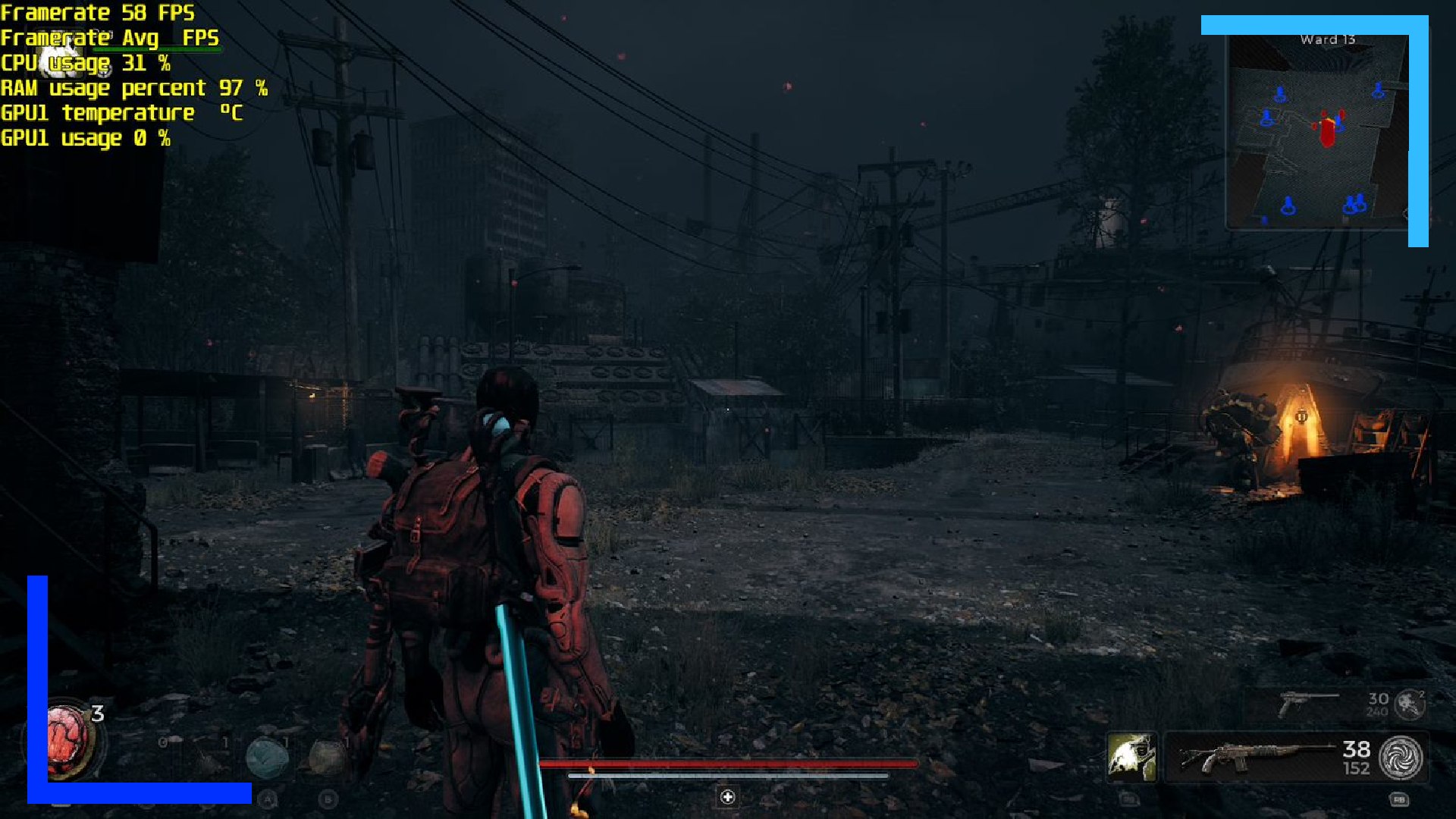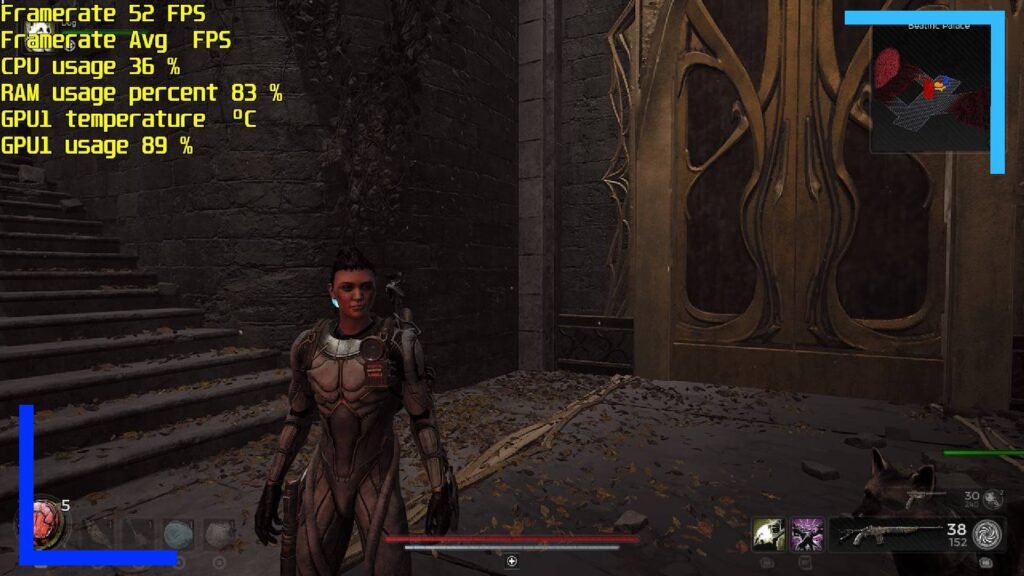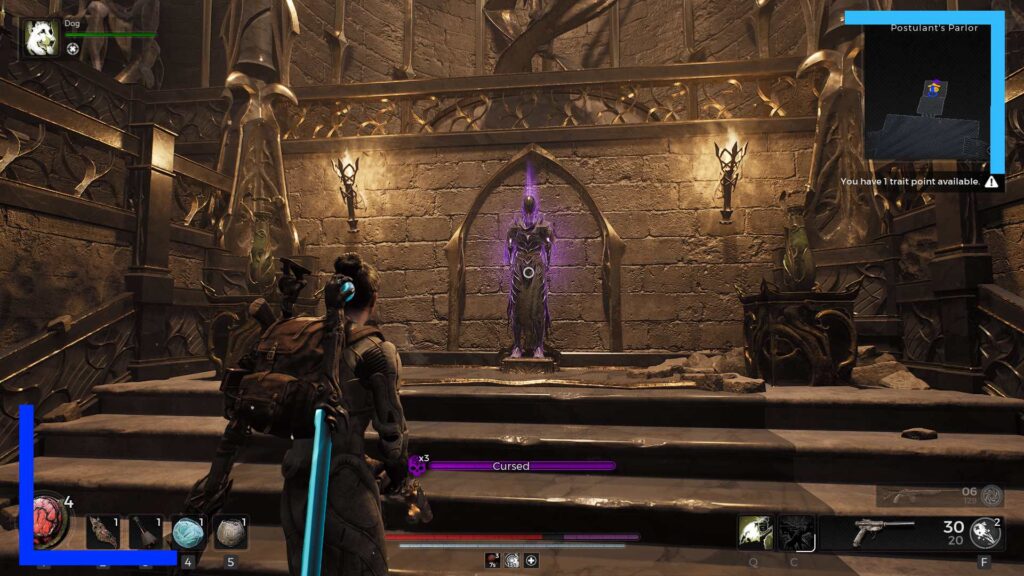

Pictured: Left – Remnant 2 on ultra settings. Right – Remnant 2 on low settings. Both use the XG Mobile in these screenshots.
Remnant 2 is playable on the ASUS ROG Ally but it’s worth keeping your expectations in check.
Performance

- 30 frames per second is fairly fluid.
- 30 to 45 is possible.
- Performance overall suffers from hitching.
- Remnant 2 uses a lot of GPU and CPU power.
- Crashes happen often enough to be a problem.
What a difference a day makes. Prior to launch, during the review period, Remnant 2 wasn’t playable. It would boot, and the visuals were an improvement over that of the Steam Deck version, but it couldn’t go longer than one minute without crashing.
But since the day-one patch has been released, Remnant 2 is now fully playable on the ASUS ROG Ally.
The new patch has improved the game by a lot but it’s still not anywhere near perfect. Framerates are still unstable and crashes still occur, albeit much, much less frequently.
You’ve got two options when it comes to stability. You can either have a mix, or you can lock the game to 30 frames per second. 60 is out of the question unless you hook up the XG Mobile (I used the XG Mobile 2023 edition), but that’s not an option everyone has.
For me, I think leaving the framerate at 60 and playing within a mix of 30 to 45 is the optimal way to play. I’d have preferred a stable 45, but Remnant 2 doesn’t feel optimized enough just yet.
Even with my 4090 eGPU hooked up, on low settings, I was still using 60 percent of the GPU. On ultra settings, it was in the 80s!
I’d wager there’s something going on behind the scenes that isn’t obvious to players. With something like Cyberpunk 2077, it’s clear where all that power is going. With Remnant 2, it isn’t immediately obvious what’s causing such high usage.
What’s interesting is each area messes with the framerate in different ways. Some ideally need the game locked at 30, while others can run well at 45 without many issues.
If you care about fluidity, lock the game to 30. It will dip below that, but for the most part it’s perfectly serviceable.
Recommended ASUS ROG Ally Settings

My settings below are what I’ve been using while in handheld mode. The first step is to crank everything down to low. The second step is to turn off motion blur.
While motion blur can help games at lower framerates, it’s poorly implemented and makes spinning the camera feel like stirring a soup. You definitely don’t want it left on.
One point of contention is the upscaler. AMD FSR set to performance will gain an extra few frames, and that can make a big difference in certain areas, but the trade-off is muddy, pixelated visuals. I ended up settling on turning it off, but feel free to try it out to see whether you can stomach it.
For the power profile, you ideally want to be plugged in to get the full 30 watts of power. Unplugged at 25 watts is possible, and is still playable, but for the best performance, you’ll want the charger nearby.
| Remnant 2 (In-game Settings) | |
| Display Mode | Fullscreen |
| Resolution | 1280×720 |
| Motion Blur | Off |
| Vsync | On |
| Framerate | 60 FPS |
| Upscaler | Off |
| Graphics Quality Preset | Low |
| Shadow Quality | Low |
| Post Processing | Low |
| Foliage Quality | Low |
| Effects Quality | Low |
| View distance Quality | Low |
| ASUS ROG Ally Settings | |
| Profile: Turbo 30w | Estimated Battery Life: 1 Hour 18 Minutes |
| Docked Mode Resolution: 1280×720 | Refresh Ratte: 60 Hz |
| RAM Usage: 93% | GPU Usage: 90 to 95% |
| Performance Rating: 3/5 | |
Bugs and Issues
Aside from what I’ve covered already – namely serviceable performance and lesser visuals – one of the biggest problems Remnant 2 has is hit detection. Let me give you some examples.
Stand by fire and you’ll be set alight. Stand near goo and you’ll be poisoned. Dive out the way of the boss attack and you’ll still take damage.
These problems leave Remnant 2 often feeling like an unfair game. Dying even though you were being careful and did what the game asked isn’t fun, and leads to learning how to dodge attacks based on your unjust hitbox size rather than when the attack is due.
With any soulslike you are going to get hit and die. That’s expected. But the problems I’m seeing and feeling aren’t bad timing or not playing safe enough. I’ve tested this theory out several times and the results are always the same.
There’s also a problem with ghosting – where the image doesn’t refresh correctly resulting in a ghost-like trail – and crashes are enough to be a bother.
Verdict

This review has been hard to write because in spite of the plethora of problems, Remnant 2 is a really good game.
The sense of exploration, the enemy design, the varied locales, the weapon upgrades, the combat, the boss fights – there’s so much to love. If you’re after a more approachable soulslike, Remnant 2 is one of the greats.
It’s just a crying shame that when it comes to performance it’s simply not good enough. I know there’s a case to be made that the Remnant 2 wasn’t designed for the ASUS ROG Ally, but then why are there also problems on PC? If the PC version was up to scratch, the ROG Aly version would have a better shot at success.
As much as it pains me, I can’t recommend Remnant 2 yet. It’s a brilliant game that gets the Souls formula right and improves on the first game tenfold. But in a year where more and more full-price AAA PC games aren’t ready to be released, Remnant 2 keeps alive a tradition that needs to end.
Screenshots captured on ASUS ROG Ally hardware. | Review code provided by Gearbox. To learn more about our review policy click here. | Alternatively, click here to find out why you can trust me.

